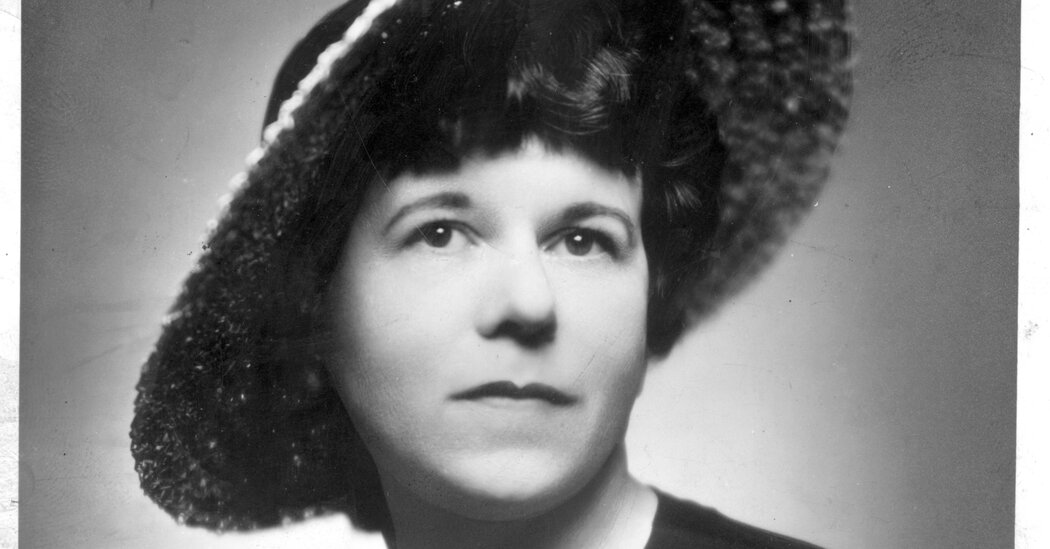The writer Dawn Powell may be most famous for not being more famous. During her life, she published more than a dozen novels, several plays, short stories, magazine articles and wrote for Hollywood. “There are so many kinds of fame for a writer that it is astonishing the number of us who never achieve even one,” she wrote.
She ran in the same circles as John Dos Passos, Dorothy Parker and Ernest Hemingway — who, she said, had called her “his favorite living writer” — but success eluded her in her lifetime. When she died in 1965, most of her books were out of print.
But in the decades since then she has become a cult figure. Gore Vidal praised her as “our best comic novelist” in 1987, her reissued books have found legions of new fans and she occasionally pops up in unexpected places: with a mention on the television series “Gilmore Girls,” or as a character in an Off Broadway play. She now inspires the kind of devotion that might include pilgrimages to her gravesite — had her body not wound up in an unmarked grave in New York City’s potter’s field, on Hart Island off the coast of the Bronx.
Now that grave could become a little less inaccessible. Earlier this year the city’s parks department announced that it plans to open Hart Island to the public, just a few years after it took over control of the site from the Department of Correction. The development has some of Powell’s admirers considering whether there might be an opportunity to memorialize her, while musing on how to best commemorate writers and speculating as to what she would have wanted herself.
It is unclear what might be possible. Getting there requires taking a ferry from City Island in the Bronx, and access will be limited at first. The city plans to continue conducting burials there.
“In addition to the ongoing private gravesite visits for close family, we are happy to share that we are exploring avenues for expanded public access led by our Urban Park Rangers,” Dan Kastanis, a spokesman for the parks department, said in an email.
Some Powell admirers, though intrigued by the prospect of access to the island, are not sure if it will be possible to commemorate her there, or even worth it.
“To me, if you’re looking for Dawn Powell, read her books,” said Fran Lebowitz, the writer and humorist, in a phone interview. Though a fan of Powell’s, Lebowitz said she wouldn’t go visit Hart Island. “You’re talking to a person who has such horrible seasickness, at the word boat I really don’t feel well,” she said. “So I’m only going to any place in a boat if I’m already dead.”
Patricia Palermo, who wrote “The Message of the City: Dawn Powell’s New York Novels, 1925-1962,” and runs a Facebook fan page for her, said she hopes to help get Powell a memorial or official plaque somewhere in the city: “Right now, we’re sort of in limbo, just like she’s been in limbo all these years. It’s just so tragic.”
Tim Page, a journalist and critic who wrote “Dawn Powell: A Biography,” said he’d love to see a memorial for her somewhere in New York City, but it doesn’t necessarily have to be at the site where she’s buried. “There’s a sort of glorious anonymity out there.”
Wendy Silver, a great-niece of Powell’s, said she would be open to visiting the site if she were ever in New York. Family members were only granted access to the gravesites in 2015, after the city settled a class-action lawsuit. But, Silver said, “I feel like I find her life in her books. And in that way she still lives on in my family and in anyone who’s a fan.”
Hart Island became a public cemetery in 1869, and over a million people are buried there, including stillborn babies, homeless people, AIDS victims and people who could not afford private burials. Some ended up there by accident, without the consent or even knowledge of their families. Many simply fell through the cracks.
The graves are unmarked. Many coffins were stacked in large, deep trenches. A fire in the 1970s destroyed a number of burial records, so the exact location of some graves may be nearly impossible to find.
That likely includes Powell’s. Both the city’s Human Resources Administration, which operates the cemetery on Hart Island, and the Office of Chief Medical Examiner, which took over city burials there in the mid-2000s, said they did not have a record for her. Nickolas Burruano, a senior administration analyst for the General Support Services of the H.R.A., said in an email that unless the family had more information on her grave, “it would be very hard to locate.”
The circumstances of Dawn Powell’s grave are, in some ways, a fitting postscript to her life. Born in Ohio in 1896, Powell ran away from an abusive family life at a young age, eventually leaving the state for New York City in 1918 after graduating from college. She moved with her husband and son to Greenwich Village in 1924.
She would spend the rest of her life in the neighborhood, writing, drinking, rubbing shoulders with the literary elite and experiencing continuous money, health and career setbacks. “All my life seems to have been spent killing geese that lay golden eggs and it’s a fine decent sport,” she wrote in 1943.
Some of Powell’s novels were about her native Ohio, like “My Home Is Far Away,” some satires of New York City types, like “A Time to Be Born” and “The Locusts Have No King.” She wrote that she wanted one novel “to be delicate and cutting,” because “nothing will cut New York but a diamond.” About her characters, she said: “I give them their heads. They furnish their own nooses.”
That attitude made her a tough sell, and her books had limited commercial success. “She was a real satirist, and satire is a little dangerous,” said Page, who added that “she got this reputation as being really, really mean.”
Lebowitz said: “They’re very sharp, they’re bitter. There’s too much truth in those books.”
Critics took note.
“If words could kill, Dawn Powell’s victims would make a row of well-dressed, sophisticated corpses long enough to stretch from Sheridan Square to Radio City,” the critic Orville Prescott wrote in The New York Times in a 1948 review of “The Locusts Have No King.”
Powell died of cancer in 1965, after years of poor health. In a hastily written will, she named her friend Jacqueline Miller Rice as the executor of her estate. She left her body to Cornell Medical Center for research.
About five years later, Rice declined to reclaim the body, telling the school to “dispose of the remains of Dawn Powell in the City Cemetery, as the family does not wish to take possession,” according to Page’s biography. Rice was quoted in the book defending the decision: “She would have hated being in Ohio forever.” The book said that Rice had not informed Powell’s family, who only found out where she was buried in the 1990s.
Jayne Blanchard, a medical copy writer in Baltimore and a Powell fan, said she would want to visit Hart Island but called it an “unsuitable end” for Powell, pointing to the unveiling of a headstone for Dorothy Parker at Woodlawn Cemetery in the Bronx in 2021, when her ashes were finally brought there after an odyssey of more than 50 years.
“If they could only make such a big deal over Powell, where she’s buried,” Blanchard said.
But to Powell, it may not have mattered where she ended up. “I don’t think it was important to her,” said Vicki Johnson, another great-niece of Powell’s and Wendy Silver’s sister. “I think her work and writing was important to her.”
Page agreed. “She might have liked the idea that New York City now had her as part of New York City forever,” he said, “and had even paid for her funeral.”


